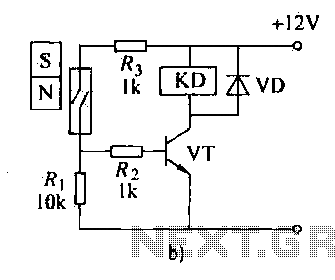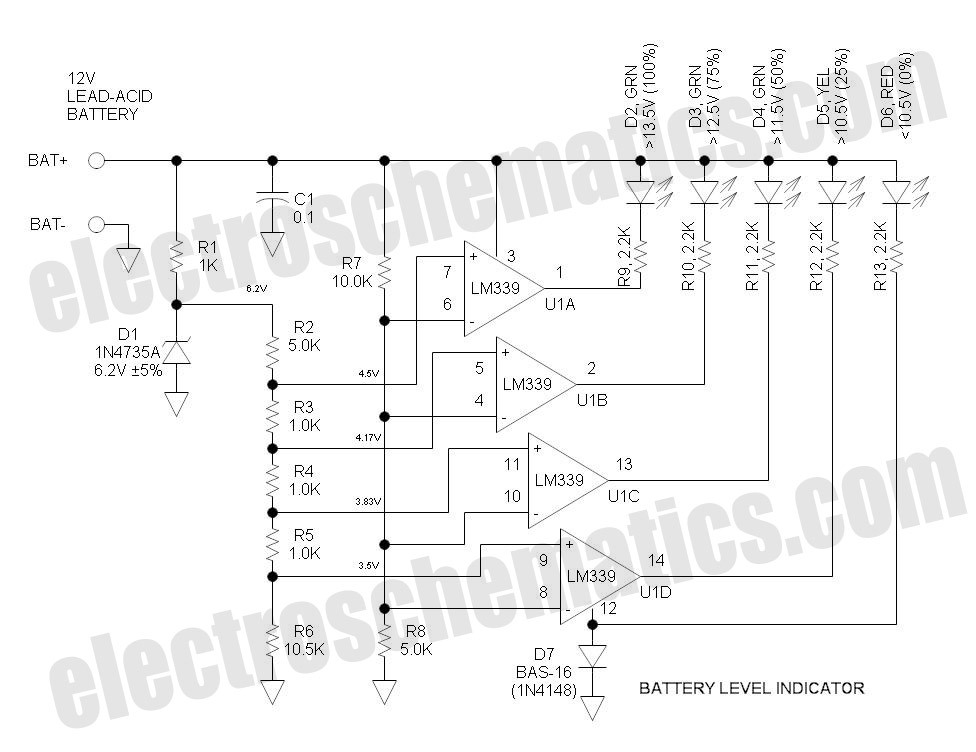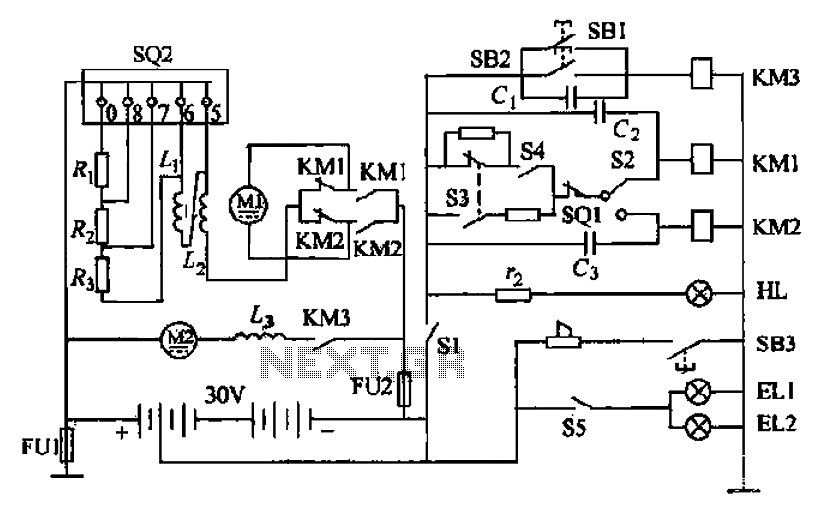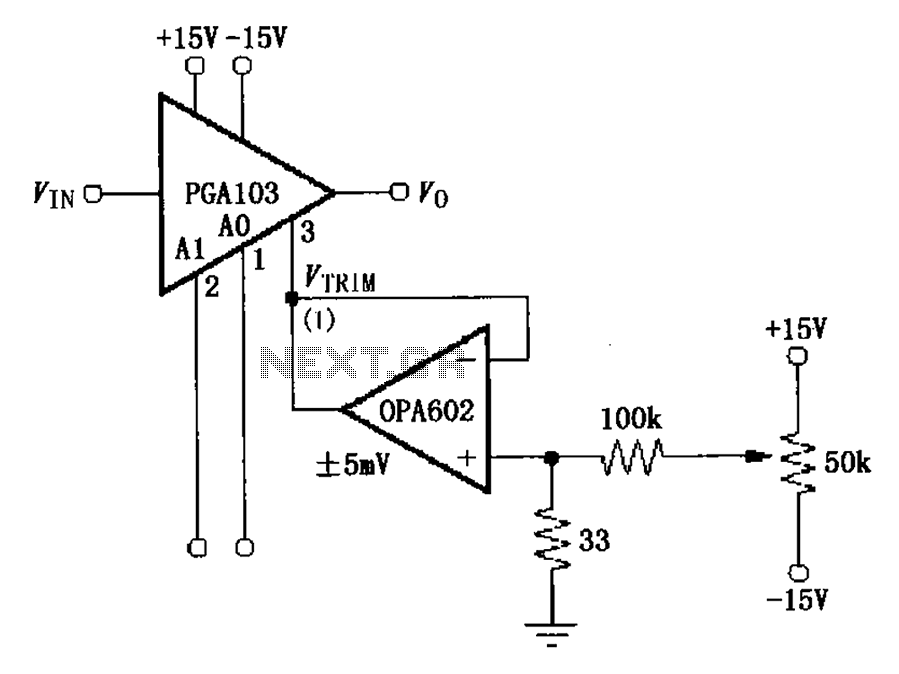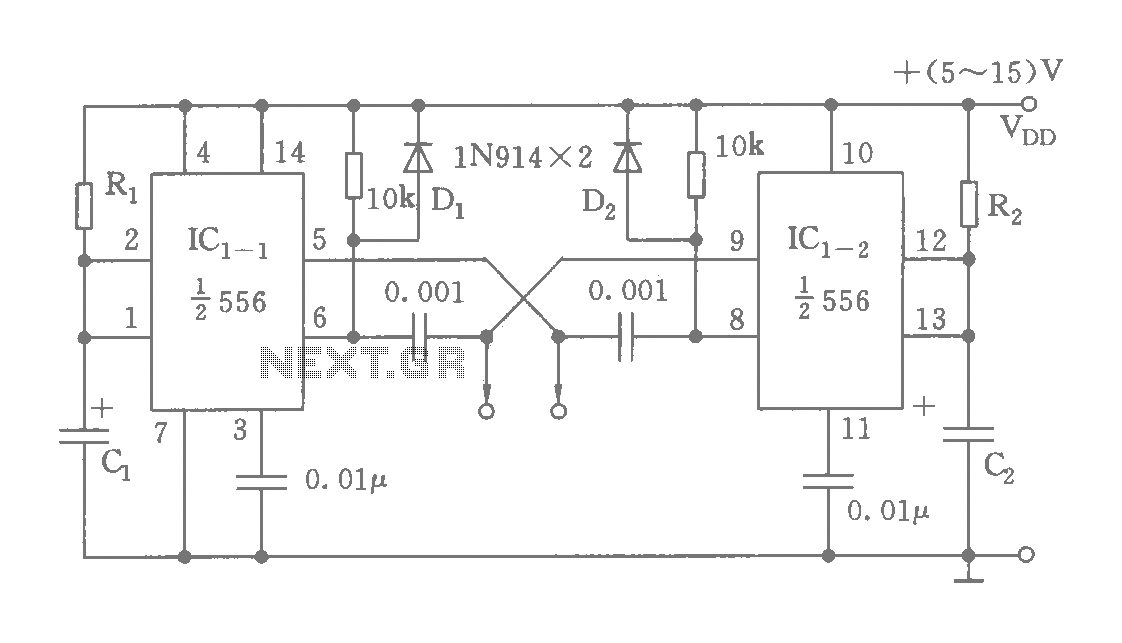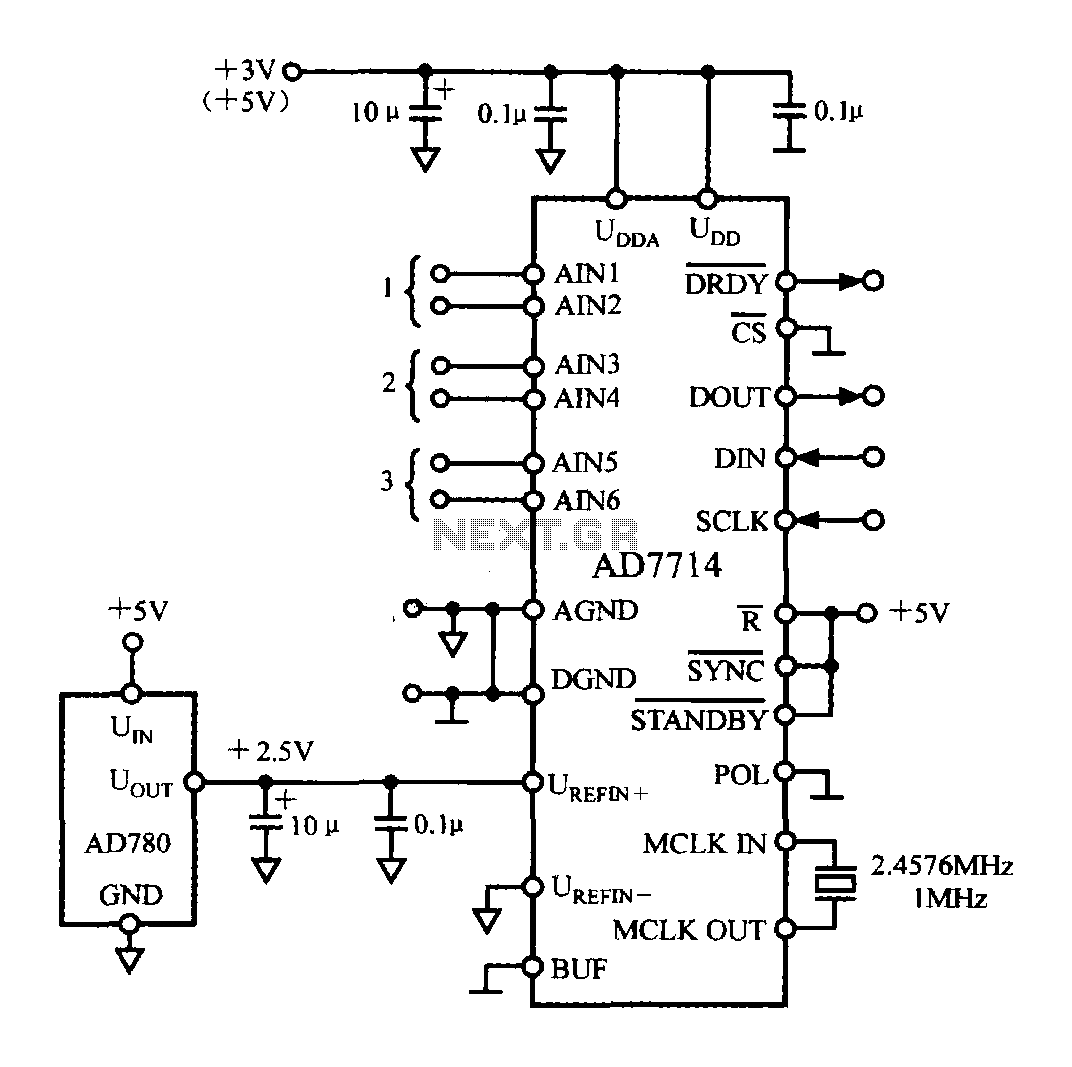
electrodes circuit
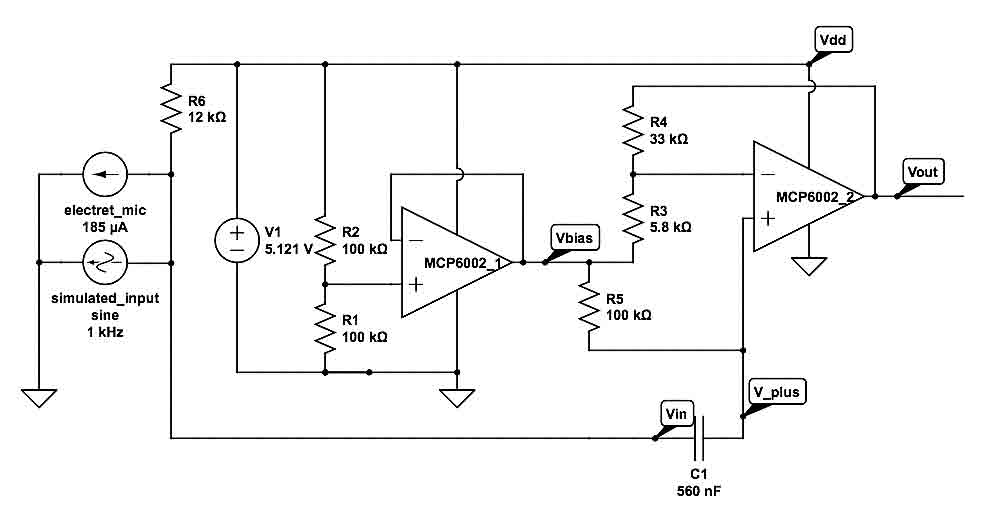
Measurements were conducted using a modified program to measure the voltage applied at the drive electrode and the voltage at the sense electrode. Conductance was calculated using the formula 0.01S * V_resist / (V_applied * V_resist). The initial version of the program exhibited fluctuations in the square wave period, likely due to the same pin being utilized for both digital output and analog input. Subsequently, another pin was connected to monitor the digital output, resulting in a more stable 65 kHz square wave. Minor discrepancies in measurements may arise from cross-contamination during electrode transfers between baths. Although electrodes were wiped between measurements, complete cleanliness was not achieved. The 0.1M and 1.0M solutions did not exhibit a tenfold ratio in conductance as expected, showing only about 6 to 6.6, depending on the measurement set. This discrepancy may be due to an error in the dilution process for the 0.1M solution or incorrect assumptions regarding the linear relationship between conductance and concentration. The device appears capable of measuring from approximately 1E-4M to 3M NaCl, with sufficient resolution in ADC measurements to detect concentrations down to 1E-5M, contingent upon avoiding contamination, and up to saturated salt levels of around 6.2M. Calibration with a series of test solutions would be crucial if the linearity assumption proves incorrect. The source code for the KL25Z, utilizing the mbed.org compiler, is provided. Pins A0 and A2 were connected to the drive electrode, while pin A1 was connected to the sense electrode. The sense electrode was linked through 200Ω resistors to ground and 3.3V.
The circuit described involves a measurement setup for determining the conductance of ionic solutions using a microcontroller platform (KL25Z) with an analog-to-digital converter (ADC). The drive and sense electrodes are essential components in this setup, where the drive electrode applies a voltage to the solution while the sense electrode measures the resultant voltage, which is indicative of the solution's conductance.
The measurement process begins with the initialization of the microcontroller and the configuration of the ADC. The ADC settings are critical for ensuring accurate voltage readings. The configuration includes setting the resolution to 16 bits, selecting the appropriate clock source, and enabling low-power modes. The ADC is set to sample the voltage at the sense electrode (PTB1) while monitoring the drive voltage (PTB2) simultaneously.
Conductance calculations are performed using the relationship between the applied voltage and the measured voltage, adjusted for the resistance values in the circuit. The formula used for conductance, 0.01S * V_resist / (V_applied * V_resist), indicates that the resistance of the solution can be derived from the voltage measurements, allowing for the determination of ionic concentration.
The use of a stable square wave at 65 kHz generated by the microcontroller is crucial for accurate measurements. A digital output pin (PTB0) is configured to produce this square wave. The frequency stability is enhanced by isolating the digital output from the analog input, addressing the fluctuations observed in the initial setup.
The circuit also includes provisions for calibration, which is essential for ensuring measurement accuracy across varying concentrations of NaCl solutions. The calibration process would involve preparing a series of standard solutions with known conductance values to establish a reference for the measurements taken by the device.
In conclusion, this electronic schematic represents a robust design for measuring the conductance of ionic solutions, utilizing a microcontroller, ADC, and electrodes. The careful consideration of circuit design, calibration, and measurement techniques is vital for achieving reliable and accurate results in ionic concentration analysis.Measurements were made with a modified program, so that I could measure the applied voltage at the drive electrode as well as the voltage at the sense electrode. Conductance was computed as 0. 01S * V_resist / (V_applied V_resist). The first version of the program seemed to have some problems with fluctuation in the period of the square wave, probably from using the same pin for both digital out and analog in.
I hooked up another pin to monitor the digital output and got a more consistent 65kHz square wave. The small differences are probably from cross contamination as I moved the electrodes from one bath to another. I wiped them between measurements, but did not get them completely clean and dry. The 0. 1M and 1. 0M solutions do not show a ten-fold ratio of conductances, only about 6 6. 6 depending which set of measurements one takes. Either I did the dilution to make the 0. 1M solution wrong (quite possible ”I`m clumsy at even trivial wet-lab stuff) or my assumption that conductance should be linear with concentration is way off.
It looks like the device should be able to measure from about 1E-4M to 3M NaCl. There is enough resolution in the ADC measurements to go down to 1E-5M (if the electrodes could avoid contaminating that) and up to saturated salt (about 6. 2M). It would be important to have a series of test solutions to calibrate the unit, if the linearity assumption is wrong.
Here is a plot of the ionic concentration vs time for the second set of readings, based on the assumption of linearity and the correctness of the 1MNaCl reading: Here is the source code for the KL25Z (using the mbed. org compiler). Pins A0 and A2 were connected to the drive electrode, pin A1 to the sense electrode. The sense electrode electrode was connected via 200 © resistors to Gnd and 3. 3V. #include "mbed. h" Serial USB_io(USBTX, USBRX); // defaults to 9600 8N1 (reset in main to 115200 baud) Timer since_start; AnalogIn Vapply(PTB2); AnalogIn Vsense(PTB1); DigitalInOut square_out(PTB0); // PTB0=arduino A0 //PTB0, PTB1, PTD6, and PTD7 I/O have both high drive and normal drive capability selected by the associated PTx_PCRn[DSE] control bit.
#define WARMUP (20000) // number of cycles of toggling output before collecting data #define COLLECT (10000) // number of cycles of data to sum for each output #define Vdd (3. 3) // High voltage at output int main() { USB_io. baud(115200); USB_io. printf(" usec V_out V_appl N N N "); //DEFAULT configuration of analog input ADC0->CFG1 = ADC_CFG1_ADLPC_MASK // Low-Power Configuration | ADC_CFG1_ADIV(3) // Clock Divide Select: (Input Clock)/8 | ADC_CFG1_ADLSMP_MASK // Long Sample Time | ADC_CFG1_MODE(3) // (16)bits Resolution | ADC_CFG1_ADICLK(1); // Input Clock: (Bus Clock)/2 ADC0->CFG2 = ADC_CFG2_MUXSEL_MASK // ADxxb channels are selected | ADC_CFG2_ADACKEN_MASK // Asynchronous Clock Output Enable | ADC_CFG2_ADHSC_MASK // High-Speed Configuration | ADC_CFG2_ADLSTS(0); // Long Sample Time Select ADC0->SC2 = ADC_SC2_REFSEL(0); // Default Voltage Reference ADC0->SC3 = ADC_SC3_AVGE_MASK // Hardware Average Enable | ADC_SC3_AVGS(0); // 4 Samples Averaged // FAST analog input // SIM->SCGC6 |= SIM_SCGC6_ADC0_MASK; // enable ADC0 clock // SIM->SCGC5 |= 1 << (SIM_SCGC5_PORTB_SHIFT); // enable PORTB clock ADC0->SC1[1] = ADC_SC1_ADCH(ADC0_SE9); // PTB1 ADC0->CFG1 = ADC_CFG1_MODE(3) // (16)bits Resolution | ADC_CFG1_ADLSMP_MASK // Long Sample Time | ADC_CFG1_ADICLK(0); // Input Clock: (Bus Clock) ADC0->CFG2 = ADC_CFG2_MUXSEL_MASK // ADxxb channels are selected | ADC_CFG2_ADACKEN_MASK // Asynchronous Clock Output Enable | ADC_CFG2_ADHSC_MASK // High-Speed Configuration | ADC_CFG2_ADLSTS(0); // longest "long" Sample Time Select // | ADC_CFG2_ADLSTS(3); // shortest "long" Sample Time Select ADC0->SC2 = ADC_SC2_REFSEL(
🔗 External reference
The circuit described involves a measurement setup for determining the conductance of ionic solutions using a microcontroller platform (KL25Z) with an analog-to-digital converter (ADC). The drive and sense electrodes are essential components in this setup, where the drive electrode applies a voltage to the solution while the sense electrode measures the resultant voltage, which is indicative of the solution's conductance.
The measurement process begins with the initialization of the microcontroller and the configuration of the ADC. The ADC settings are critical for ensuring accurate voltage readings. The configuration includes setting the resolution to 16 bits, selecting the appropriate clock source, and enabling low-power modes. The ADC is set to sample the voltage at the sense electrode (PTB1) while monitoring the drive voltage (PTB2) simultaneously.
Conductance calculations are performed using the relationship between the applied voltage and the measured voltage, adjusted for the resistance values in the circuit. The formula used for conductance, 0.01S * V_resist / (V_applied * V_resist), indicates that the resistance of the solution can be derived from the voltage measurements, allowing for the determination of ionic concentration.
The use of a stable square wave at 65 kHz generated by the microcontroller is crucial for accurate measurements. A digital output pin (PTB0) is configured to produce this square wave. The frequency stability is enhanced by isolating the digital output from the analog input, addressing the fluctuations observed in the initial setup.
The circuit also includes provisions for calibration, which is essential for ensuring measurement accuracy across varying concentrations of NaCl solutions. The calibration process would involve preparing a series of standard solutions with known conductance values to establish a reference for the measurements taken by the device.
In conclusion, this electronic schematic represents a robust design for measuring the conductance of ionic solutions, utilizing a microcontroller, ADC, and electrodes. The careful consideration of circuit design, calibration, and measurement techniques is vital for achieving reliable and accurate results in ionic concentration analysis.Measurements were made with a modified program, so that I could measure the applied voltage at the drive electrode as well as the voltage at the sense electrode. Conductance was computed as 0. 01S * V_resist / (V_applied V_resist). The first version of the program seemed to have some problems with fluctuation in the period of the square wave, probably from using the same pin for both digital out and analog in.
I hooked up another pin to monitor the digital output and got a more consistent 65kHz square wave. The small differences are probably from cross contamination as I moved the electrodes from one bath to another. I wiped them between measurements, but did not get them completely clean and dry. The 0. 1M and 1. 0M solutions do not show a ten-fold ratio of conductances, only about 6 6. 6 depending which set of measurements one takes. Either I did the dilution to make the 0. 1M solution wrong (quite possible ”I`m clumsy at even trivial wet-lab stuff) or my assumption that conductance should be linear with concentration is way off.
It looks like the device should be able to measure from about 1E-4M to 3M NaCl. There is enough resolution in the ADC measurements to go down to 1E-5M (if the electrodes could avoid contaminating that) and up to saturated salt (about 6. 2M). It would be important to have a series of test solutions to calibrate the unit, if the linearity assumption is wrong.
Here is a plot of the ionic concentration vs time for the second set of readings, based on the assumption of linearity and the correctness of the 1MNaCl reading: Here is the source code for the KL25Z (using the mbed. org compiler). Pins A0 and A2 were connected to the drive electrode, pin A1 to the sense electrode. The sense electrode electrode was connected via 200 © resistors to Gnd and 3. 3V. #include "mbed. h" Serial USB_io(USBTX, USBRX); // defaults to 9600 8N1 (reset in main to 115200 baud) Timer since_start; AnalogIn Vapply(PTB2); AnalogIn Vsense(PTB1); DigitalInOut square_out(PTB0); // PTB0=arduino A0 //PTB0, PTB1, PTD6, and PTD7 I/O have both high drive and normal drive capability selected by the associated PTx_PCRn[DSE] control bit.
#define WARMUP (20000) // number of cycles of toggling output before collecting data #define COLLECT (10000) // number of cycles of data to sum for each output #define Vdd (3. 3) // High voltage at output int main() { USB_io. baud(115200); USB_io. printf(" usec V_out V_appl N N N "); //DEFAULT configuration of analog input ADC0->CFG1 = ADC_CFG1_ADLPC_MASK // Low-Power Configuration | ADC_CFG1_ADIV(3) // Clock Divide Select: (Input Clock)/8 | ADC_CFG1_ADLSMP_MASK // Long Sample Time | ADC_CFG1_MODE(3) // (16)bits Resolution | ADC_CFG1_ADICLK(1); // Input Clock: (Bus Clock)/2 ADC0->CFG2 = ADC_CFG2_MUXSEL_MASK // ADxxb channels are selected | ADC_CFG2_ADACKEN_MASK // Asynchronous Clock Output Enable | ADC_CFG2_ADHSC_MASK // High-Speed Configuration | ADC_CFG2_ADLSTS(0); // Long Sample Time Select ADC0->SC2 = ADC_SC2_REFSEL(0); // Default Voltage Reference ADC0->SC3 = ADC_SC3_AVGE_MASK // Hardware Average Enable | ADC_SC3_AVGS(0); // 4 Samples Averaged // FAST analog input // SIM->SCGC6 |= SIM_SCGC6_ADC0_MASK; // enable ADC0 clock // SIM->SCGC5 |= 1 << (SIM_SCGC5_PORTB_SHIFT); // enable PORTB clock ADC0->SC1[1] = ADC_SC1_ADCH(ADC0_SE9); // PTB1 ADC0->CFG1 = ADC_CFG1_MODE(3) // (16)bits Resolution | ADC_CFG1_ADLSMP_MASK // Long Sample Time | ADC_CFG1_ADICLK(0); // Input Clock: (Bus Clock) ADC0->CFG2 = ADC_CFG2_MUXSEL_MASK // ADxxb channels are selected | ADC_CFG2_ADACKEN_MASK // Asynchronous Clock Output Enable | ADC_CFG2_ADHSC_MASK // High-Speed Configuration | ADC_CFG2_ADLSTS(0); // longest "long" Sample Time Select // | ADC_CFG2_ADLSTS(3); // shortest "long" Sample Time Select ADC0->SC2 = ADC_SC2_REFSEL(
🔗 External reference
